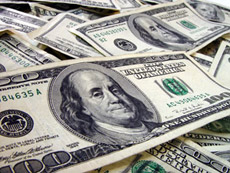Types of Assets that Companies Use
An asset is anything of value or which produces value for its owners. Tangible and intangible assets are owned and controlled by countries, non-for-profit organizations, businesses, institutions, and individuals. Tangible assets include equipment and machinery, buildings, and inventory. Equipment is anything that is powered by electricity or another source of energy. This can be computers, turbines, steam engines, pumps, and others. Inventory refers to an idle stock that is owned and held by a company and awaits use, processing, packaging, or sale. There are different types of inventory, including finished goods, raw materials, semi-finished production, maintenance items, and others. Buildings include plants, hotels, warehouses, and commercial and residential buildings.
Intangible Assets

They are another category that encompasses rights and non-physical assets and resources. These include software, trademarks, stocks, and copyrights. Goodwill usually arises when one business acquires another and encompasses employee and customer relations, brand name, and patents. A patent is a license issued by a government agency. It gives to holders exclusive rights over a new product, production technology, design, or process. The license is valid over a specified period (usually 20 years). Patents are beneficial for companies in that they stimulate the development of new technologies, services, and products. They are granted to individuals and businesses. Copyright refers to exclusive rights over a movie, book, performance, etc. These are legal rights that regulate the use of works of authors and artists. Copyrights are given to assignees and authors to record, perform, publish, and print. Stocks are also a type of intangible asset and represent the equity stake of business owners. Bonds are debt securities and come in different types such as government, fixed rate, zero coupon, and convertible bonds. In addition, there are climate and reversible bonds and floating rate notes. Other types of intangible assets include trademarks, accounts receivable, and software.
A trademark refers to a design, word, symbol, device, or sign that is easily recognizable by customers. It is basically a brand name, which is intended to distinguish the services and products of one business from those of another. The registration of trademarks is beneficial for businesses in that it gives them exclusive rights to use the brand name. Trademarks are often seen on vouchers, tickets, groceries, labels, and packages. Canada and the U.S., for example, have established trademark rights, and courts take a number of factors into account. These include similarity and strength of trademarks and methods of marketing. Accounts receivable are also an intangible asset. This is money that customers owe to a company for products and services bought and used.
Other types of Assets
Contingent assets and natural assets such as ocean, underground, and river water and air are excluded from the category of assets. This is provided that they are not used for economic purposes and are not financial assets. Human capital is also excluded. Generally, assets can be divided into financial, non-produced and non-financial, and produced and non-financial assets. They are reported in the financial statements, together with expenses, income, equity, and liabilities.
Assets are also divided into non-current and current. Non-current are those that bring benefits in the long term (e.g. more than one year). Current assets are used within the same year. Accounts receivable, cash, and inventory fall in the category of current assets. Vehicles, office buildings, plants, and machinery and equipment are non-current assets. Some types of assets are expanded when a business reinvests the profits while others are not. Both are good investment. The latter category includes patents that require little money and may bring substantial profits. Other assets generate little or no cash flow, but they appreciate quickly. This category includes collectibles and works of art by famous painters and artists. Some types of assets keep with the pace of inflation, but their maintenance and storage costs businesses money. Real estate properties, personal vehicles, and precious metals are in this category. Finally, there are assets that have no or little value when sold and depreciate quickly. These are items that many households buy – inexpensive pieces of furniture, second-hand goods, and other items that are of little value. One example is taking out a loan to buy an expensive TV. By the time the borrower pays off the loan, the TV would have lost most of its value.
Related Articles
Equity and Types of Assets Companies Own
Equity refers to security or stocks and shows the value of assets or an ownership interest. It is calculated by adding the company’s retained losses or earnings and the money contributed by shareholders. All companies have assets and liabilities and when their outstanding obligations exceed their...
Unencumbered Assets to Borrow and Cover Cash Outflows
Unencumbered refers to a real estate property or an asset that is free from liens and claims by financial institutions. Such assets are easily liquidated, sold, and transferred. Examples of Assets A car purchased using an unsecured loan is considered an unencumbered asset. The same is true for...
Asset Classes That Bring Long-Term Benefits
Assets can be categorized in different ways, but the main classes are tangible and intangible. They can be subdivided into fixed and current, and examples include furniture, machinery, and real estate. Intangible Assets and Economic BenefitsBrands, goodwill, and intellectual property fall in this...
Asset Allocation Strategies for Conservative and Aggressive Investors
Asset allocation refers to an investment strategy that helps companies and individuals to allocate their investments in cash, bonds, stocks, and other securities. Assets classes differ when it comes to yields and level of risk. The main classes are cash and equivalents, fixed-income securities, and...
